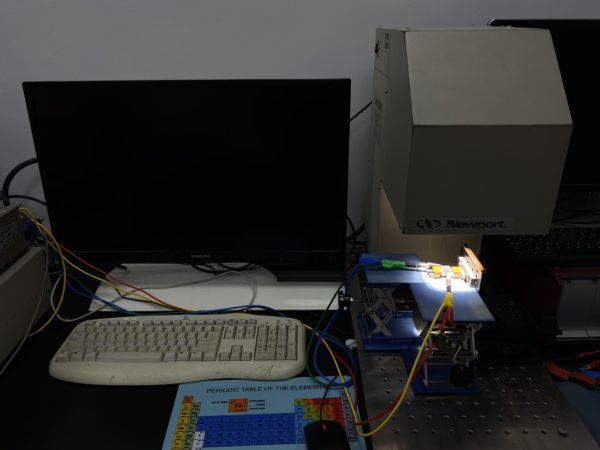A group of scientists from the East China University of Science and Technology and the Hebei University of Science and Technology in China has developed a technique to build printable mesoscopic perovskite solar cells with an electrode made of carbon recycled from waste toner carbon from printer cartridges.
The solar cell was built with graphite and carbon black from Beijing Dk Nano Technology Co., Ltd, α-Terpineol from Titan Technology
Co., Ltd, lead iodide (PbI2) and methylammonium halides (CH3NH3I) from Advanced Electronic Technology Co., Ltd, 5-ammonium valeric acid iodide (5-AVAI) and titanium oxide (TiO2) from GreatCell Solar, zirconium dioxide (ZrO2 paste) from WonderSolar Co., Ltd, and γ-butyrolactone (GBL) from Acros Organics. “And waste toner carbon powder used here was got from office of ourself,” the scientists explained. “All materials were used as received without further purification.”

Image: East China University of Science and Technology
The carbon paste for the electrode was made with 5.6 g of waste toner carbon powder and graphite, 1.06 g ZrO2, and 0.8 g ethyl cellulose dispersed into 15 g α-Terpineol. Four samples were created with a weight content of 5 wt%, 10 wt%, 17 wt% and 23 wt%, respectively.
The variations in the amount of carbon paste used have a different impact on the solar cell performance, as these change considerably the electrode's morphology, charge recombination, hydrophobicity, work function, and conductivity. “As a result, the photoelectric conversion efficiency (PCE) reaches as high as 11.78% with 10% weight content of waste toner carbon,” the Chinese group stated, “The best performance is determined by the electrode morphology and hydrophobic characteristics, which in turn affects the injection of perovskite precursors, crystal formation, suppression of charge recombination, and charge extraction and collection.”
The cell also achieved an open-circuit voltage of 0.88 V, a short-circuit current density of 24.64 mA cm, and a fill factor of 54.56%.
The proposed technique is described in the paper Photovoltaic green application of waste toner carbon on fully printable mesoscopic perovskite solar cells, which was recently published in Solar Energy. The scientists claim the novel technology opens up a “new pathway for the green application of waste toner carbon.”
This content is protected by copyright and may not be reused. If you want to cooperate with us and would like to reuse some of our content, please contact: editors@pv-magazine.com.




1 comment
By submitting this form you agree to pv magazine using your data for the purposes of publishing your comment.
Your personal data will only be disclosed or otherwise transmitted to third parties for the purposes of spam filtering or if this is necessary for technical maintenance of the website. Any other transfer to third parties will not take place unless this is justified on the basis of applicable data protection regulations or if pv magazine is legally obliged to do so.
You may revoke this consent at any time with effect for the future, in which case your personal data will be deleted immediately. Otherwise, your data will be deleted if pv magazine has processed your request or the purpose of data storage is fulfilled.
Further information on data privacy can be found in our Data Protection Policy.